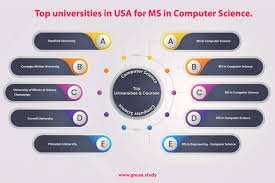The Importance of STEM Education
STEM (Science, Technology, Engineering, and Mathematics) education is more than just a subject in school—it’s the foundation of America’s future. As technology continues to evolve, the demand for STEM professionals is increasing rapidly. If the U.S. wants to remain a global leader, investing in STEM education is not just important—it’s necessary.

What Is STEM Education?
STEM education focuses on integrating science, technology, engineering, and mathematics into learning. Unlike traditional education, STEM encourages problem-solving, critical thinking, and hands-on experience. It helps students develop skills needed for high-paying jobs and innovative industries.
Why STEM Education Is Essential for America’s Future
1. Job Growth and Economic Impact
- The U.S. Bureau of Labor Statistics predicts STEM-related jobs will grow by 10% or more in the next decade.
- STEM careers often offer higher salaries compared to non-STEM fields.
- A strong STEM workforce ensures the U.S. remains competitive in global markets.
2. Technological Advancements and Innovation
- The world is moving towards artificial intelligence (AI), robotics, and space exploration—all powered by STEM.
- Investing in STEM education fuels breakthroughs in healthcare, renewable energy, and cybersecurity.
- Without STEM-trained professionals, America risks falling behind countries like China and India in technological advancements.
3. National Security and Defense
- Cybersecurity threats are increasing, and the U.S. needs more trained professionals to protect national security.
- STEM innovation helps improve military technology, satellite communication, and artificial intelligence in defense strategies.
- Countries leading in STEM also dominate in geopolitics and economic power.
4. Addressing the Skills Gap
- Many companies struggle to find skilled workers in STEM fields.
- A lack of STEM education means millions of unfilled jobs in industries like IT, healthcare, and engineering.
- Encouraging more students to pursue STEM can close the workforce gap and boost the economy.

Challenges in STEM Education
1. Lack of Diversity and Inclusion
- Women and minorities are underrepresented in STEM careers.
- Programs must encourage diversity and provide equal opportunities for all students.
- Schools should promote STEM role models from diverse backgrounds to inspire young learners.
2. Outdated Teaching Methods
- Many schools still use traditional teaching instead of hands-on, project-based learning.
- Integrating modern technology, coding, and real-world problem-solving into the curriculum can improve STEM education.
3. Limited Access to Resources
- Schools in low-income areas often lack STEM labs, qualified teachers, and updated equipment.
- Government funding and public-private partnerships can help bridge the education gap.

Solutions to Strengthen STEM Education in America
1. Early Exposure to STEM
- Introducing STEM concepts in elementary school can increase interest and engagement.
- Hands-on activities like robotics, coding, and science experiments help students develop problem-solving skills early on.
2. Investing in Teacher Training
- Teachers need proper training to teach STEM subjects effectively.
- More STEM-focused professional development programs can enhance teaching quality.
3. Encouraging Women and Minorities
- Scholarships, mentorship programs, and inclusive policies can increase diversity in STEM fields.
- Schools should promote stories of successful women and minority professionals in STEM.
4. Expanding Public-Private Partnerships
- Companies can partner with schools to provide internships, mentorships, and hands-on experience.
- Tech giants like Google and Microsoft already invest in STEM education initiatives—more businesses should follow suit.
5. Making STEM Learning Fun and Engaging
- Gamification, virtual reality, and coding competitions make STEM education more interactive.
- Schools should encourage participation in science fairs, hackathons, and robotics clubs.

Conclusion: The Future Depends on STEM
STEM education is the key to America’s future success. By investing in science, technology, engineering, and math, the U.S. can ensure economic growth, national security, and global leadership. If the country fails to prioritize STEM education now, it risks falling behind in the race for innovation. The time to act is now—because the future is built on STEM.
The Shift to Online Learning: A Permanent Change or Temporary Fix?





